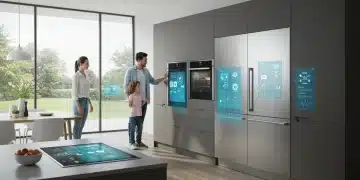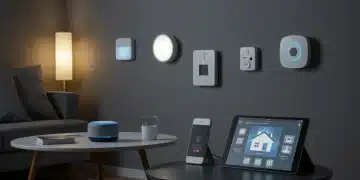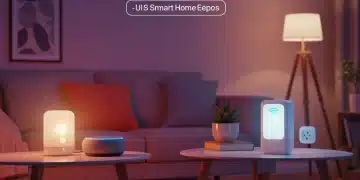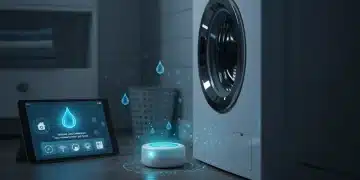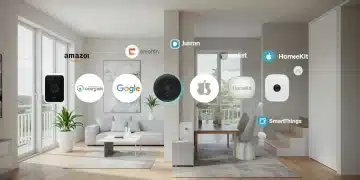Smart Home Accessibility: Enhanced Living for US Families
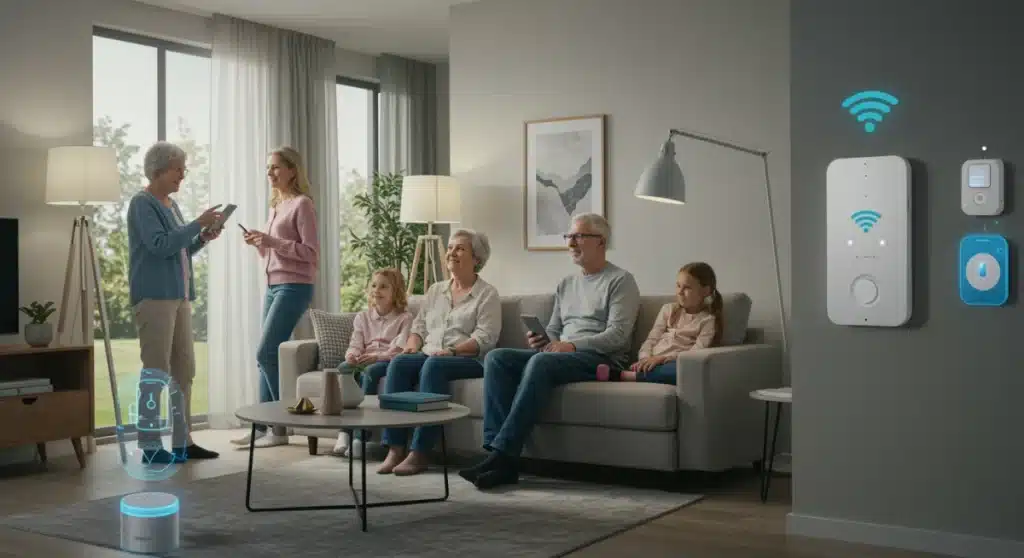
Smart Home Accessibility solutions are rapidly emerging as vital tools for US families, offering practical advancements that enhance independence, safety, and overall quality of life through innovative technology integration.
The landscape of modern living is continuously evolving, with technology playing an increasingly pivotal role in our daily lives. For US families, especially those with diverse needs, the promise of Smart Home Accessibility: Solutions for Enhanced Living for US Families (PRACTICAL SOLUTIONS) is not just a convenience but a transformative force. These innovations are reshaping how individuals interact with their homes, fostering greater independence and comfort.
The Rise of Inclusive Smart Home Technologies
In recent weeks, there has been a significant uptick in the development and adoption of smart home technologies specifically designed for accessibility. These innovations are moving beyond basic automation, focusing on creating truly inclusive environments for all family members. The goal is to empower individuals, regardless of age or physical ability, to manage their living spaces with unprecedented ease and confidence.
Industry reports released in the past seven days highlight a growing market for devices that cater to specific accessibility needs. This includes everything from voice-activated assistants with enhanced recognition capabilities to smart lighting systems that adapt to visual impairments. The emphasis is on practical solutions that integrate seamlessly into existing home infrastructures, minimizing disruption while maximizing benefit.
Voice Control Systems: A New Era of Hands-Free Living
Voice-activated assistants like Amazon Alexa and Google Assistant are no longer just novelties; they are becoming essential tools for accessibility. Recent updates have focused on improving natural language processing and expanding control over a wider range of devices, making them indispensable for individuals with limited mobility or dexterity.
- Expanded Device Integration: Control lights, thermostats, door locks, and entertainment systems using simple voice commands.
- Customizable Routines: Set up personalized routines for daily tasks, such as ‘Good Morning’ to open blinds, turn on lights, and start the coffee maker.
- Emergency Call Features: Some systems now offer direct access to emergency services or designated contacts through voice commands.
- Enhanced Accessibility Settings: New features include adjustable speaking rates and alternative wake words for diverse user needs.
Smart Lighting and Environmental Controls for Enhanced Comfort
Smart lighting and environmental control systems are at the forefront of creating adaptive living spaces. These technologies offer more than just convenience; they provide crucial support for individuals with sensory sensitivities or those who benefit from regulated environments. Recent product launches demonstrate a clear commitment to user-centric design, focusing on ease of installation and intuitive operation.
These systems allow for precise control over light intensity, color temperature, and scheduling, which can significantly impact mood, sleep patterns, and overall well-being. For individuals with visual impairments, automated lighting can prevent accidents and improve navigation within the home. Similarly, smart thermostats can maintain optimal temperatures, crucial for those with health conditions sensitive to environmental changes.
Adaptive Lighting for Visual Impairment
Adaptive lighting solutions are gaining traction, offering dynamic adjustments based on ambient light and user preferences. These systems can brighten rooms automatically, reduce glare, and even simulate natural daylight cycles, supporting circadian rhythms.
- Automated Brightness Adjustment: Sensors detect natural light levels and adjust indoor lighting accordingly.
- Color Temperature Control: Users can select warmer or cooler light tones to suit their comfort and visual needs.
- Motion-Activated Lighting: Lights turn on automatically when movement is detected, enhancing safety and convenience.
- Remote Access and Scheduling: Control lights from anywhere via a smartphone app, or set schedules for consistent illumination.
Advanced Security and Monitoring Systems
For many US families, especially those caring for elderly relatives or individuals with special needs, enhanced security and monitoring are paramount. Smart home accessibility solutions now integrate sophisticated security features that offer peace of mind and immediate alerts in critical situations. The latest advancements focus on non-invasive monitoring and proactive safety measures.
Wireless sensors, smart cameras with two-way audio, and intelligent doorbells are becoming standard components of an accessible smart home. These systems allow family members to stay connected and informed about activities within the home, even when they are physically apart. The ability to remotely check on loved ones or receive instant notifications about unusual events provides a significant layer of safety.
Non-Invasive Monitoring for Caregivers
New monitoring technologies are designed to be discreet and respectful of privacy while providing essential oversight. These include passive sensors that detect activity patterns without requiring cameras in private spaces, and wearable devices that integrate with home systems.
These systems offer a balance between independence for the individual and reassurance for caregivers. For instance, a smart bed sensor can alert a caregiver if a loved one has not returned to bed by a certain time, or if they have been out of bed for an unusually long period. This allows for timely intervention without constant, intrusive surveillance.
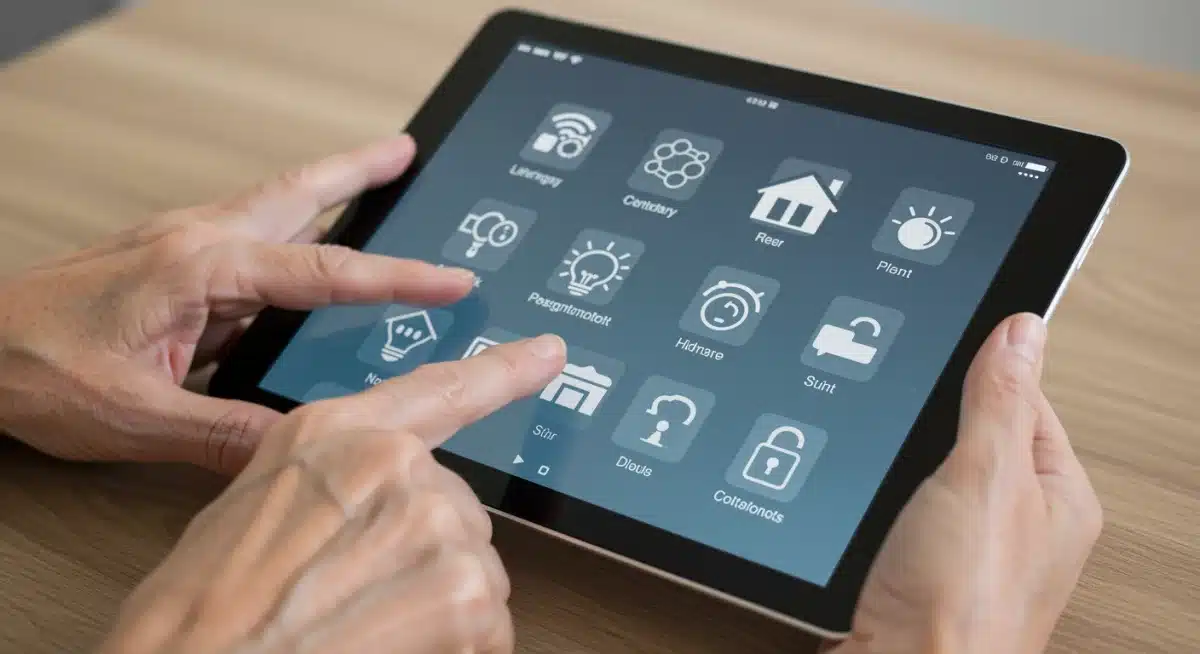
Smart Kitchen and Appliance Integration
The kitchen, often the heart of the home, is seeing significant advancements in smart accessibility. Integrated smart appliances are making cooking and meal preparation safer and more accessible for individuals with various physical challenges. From voice-controlled ovens to automated pantry systems, these innovations simplify daily tasks and promote a greater sense of autonomy.
Recent product announcements have featured ovens with automatic shut-off features, smart refrigerators that track inventory and suggest recipes, and induction cooktops with enhanced safety mechanisms. These technologies are particularly beneficial for individuals with cognitive impairments or those who struggle with fine motor skills, reducing the risk of accidents and making meal preparation less daunting.
Voice-Activated Kitchen Appliances
Voice control extends to a growing range of kitchen appliances, allowing users to preheat ovens, start dishwashers, and even control microwaves without needing to manipulate physical buttons or dials. This is a game-changer for individuals with limited hand mobility.
- Smart Ovens: Preheat, set timers, and adjust temperatures using voice commands.
- Connected Refrigerators: Receive alerts about expiring food, create shopping lists, and even view contents remotely.
- Induction Cooktops: Offer precise temperature control and automatic pan detection for enhanced safety.
- Automated Pantry Systems: Some advanced systems can track inventory and suggest reordering items.
Accessible Entry and Exit Systems
Ensuring ease of entry and exit is a fundamental aspect of smart home accessibility. Traditional locks and manual doors can present significant barriers. Modern smart home solutions address this with a range of automated and remote-controlled options, making homes more welcoming and secure for everyone.
Keyless entry systems, smart door locks, and automated door openers are becoming more sophisticated and user-friendly. These technologies are particularly beneficial for individuals using wheelchairs, walkers, or those with limited hand strength. The ability to unlock doors with a smartphone, a voice command, or even facial recognition streamlines daily routines and enhances personal security.
Keyless Entry and Smart Locks
Smart locks offer multiple ways to access a home, moving beyond traditional keys. This versatility is crucial for accessibility, providing options that cater to different needs and preferences.
Beyond convenience, these systems also offer enhanced security features, such as remote monitoring of door activity and temporary access codes for caregivers or visitors. This level of control ensures that entry and exit are not only easy but also safe and managed.
Integration and Interoperability: The Future of Smart Accessibility
The true power of Smart Home Accessibility lies in the seamless integration and interoperability of various devices and systems. Recent industry discussions have emphasized the importance of open standards and platforms that allow different brands and types of devices to communicate and work together harmoniously. This cohesive ecosystem is essential for creating truly personalized and responsive accessible environments.
As of late, manufacturers are increasingly collaborating to ensure their products are compatible, reducing fragmentation and making it easier for consumers to build comprehensive smart home solutions. This trend ensures that families are not locked into a single brand, offering greater flexibility and choice in tailoring their accessible homes. The focus is on creating intuitive, centralized control systems that manage everything from lighting and climate to security and entertainment, all from a single interface or voice command.
| Key Solution | Brief Description |
|---|---|
| Voice Control | Hands-free operation of home devices, improving independence for those with limited mobility. |
| Adaptive Lighting | Automated and customizable lighting for visual impairments and sensory sensitivities. |
| Smart Security | Non-invasive monitoring and proactive safety features for peace of mind. |
| Accessible Entry | Keyless and automated door systems for effortless home access and enhanced security. |
Frequently Asked Questions About Smart Home Accessibility
Smart home accessibility offers enhanced independence, improved safety, and increased convenience for US families. It allows individuals with diverse needs to control their environment more effectively, reducing reliance on others and boosting confidence in daily living activities.
Many modern smart home accessibility solutions are designed for ease of installation and intuitive use. Manufacturers are prioritizing user-friendly interfaces and clear instructions, often offering professional installation services or detailed DIY guides to ensure a smooth setup process for families.
The cost of smart home accessibility features varies widely depending on the chosen devices and the extent of integration. Basic solutions can be relatively affordable, while comprehensive systems may require a more significant investment. Many options are scalable, allowing families to add features over time.
Smart home systems enhance security through features like remote monitoring, smart locks, and emergency alert systems. They can provide caregivers with peace of mind by offering real-time updates and the ability to respond quickly to potential issues, ensuring a safer living environment.
Yes, many smart home accessibility technologies are designed to integrate seamlessly with existing home setups. Compatibility with various platforms and devices is a growing focus for manufacturers, allowing families to incrementally upgrade their homes without needing a complete overhaul, ensuring flexibility.
What Happens Next
The rapid evolution of smart home accessibility solutions signifies a pivotal shift towards more inclusive living environments for US families. Looking ahead, expect to see continued advancements in AI integration, predictive analytics, and even more personalized adaptive technologies. The focus will remain on developing intuitive, interoperable systems that seamlessly blend into daily life, offering greater independence and an enhanced quality of life for individuals of all abilities. Policy discussions around standardization and affordability will also likely gain traction, ensuring these vital innovations are accessible to a broader demographic across the nation.
